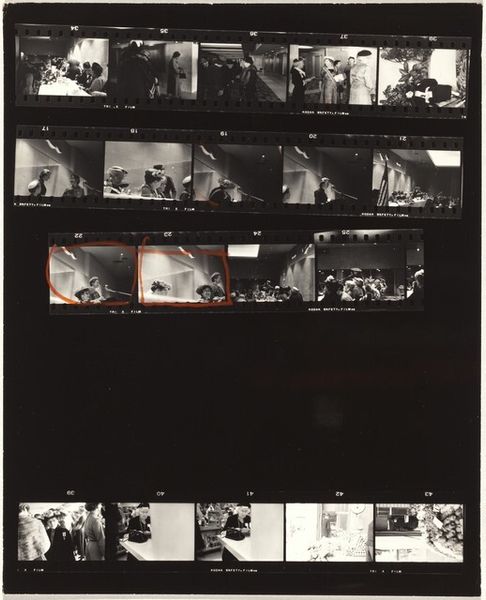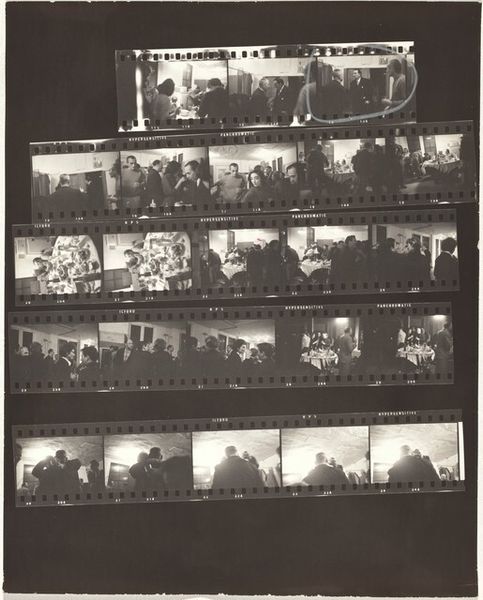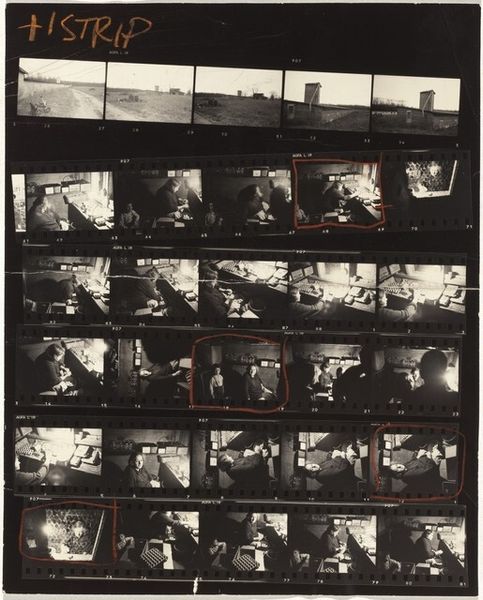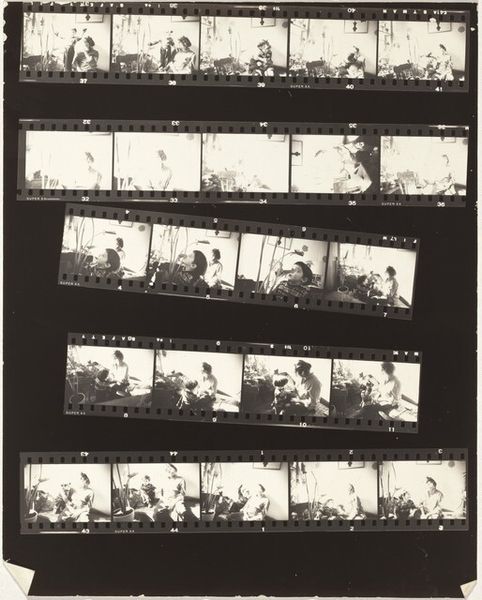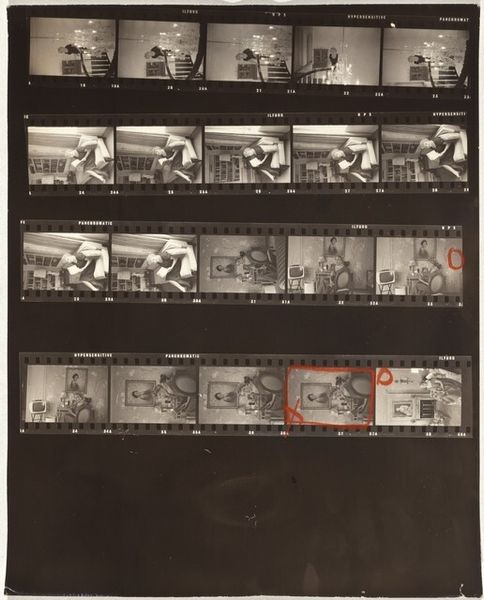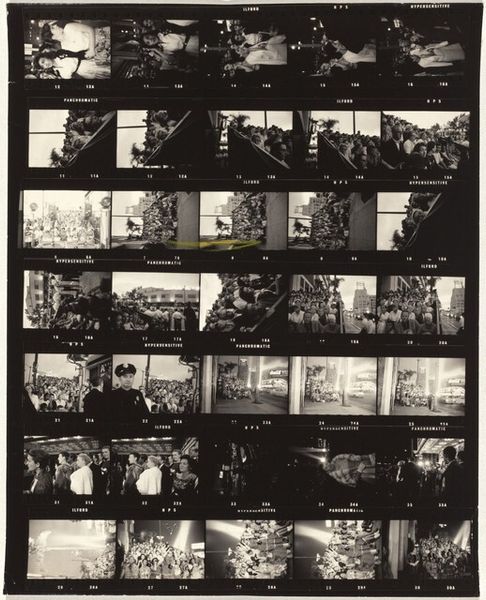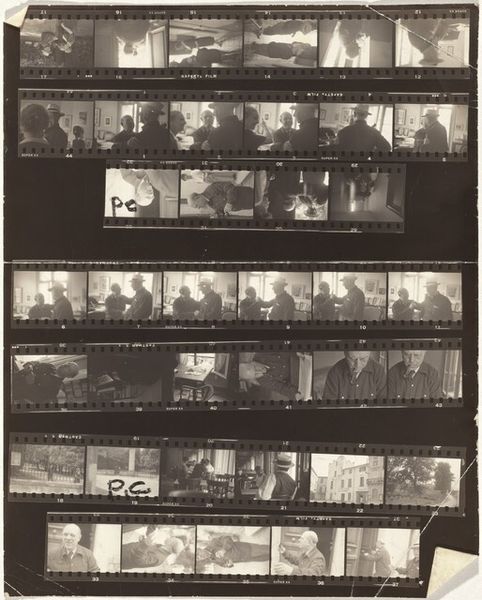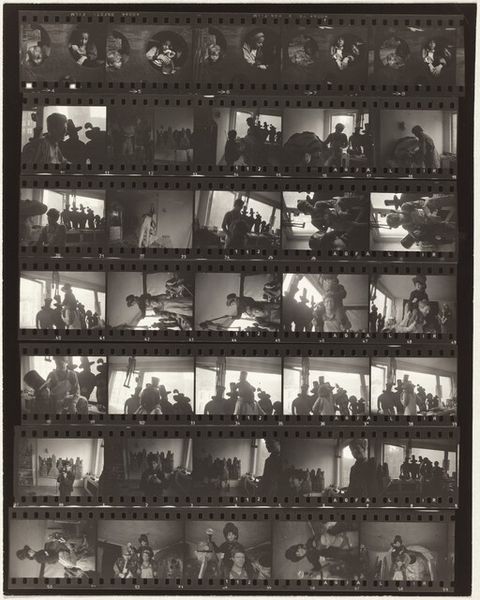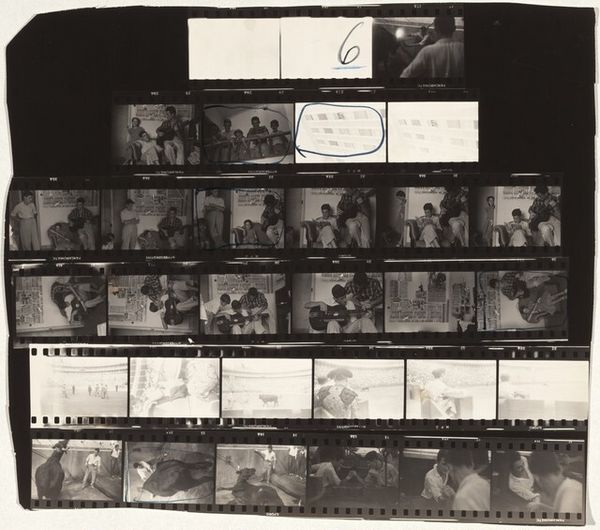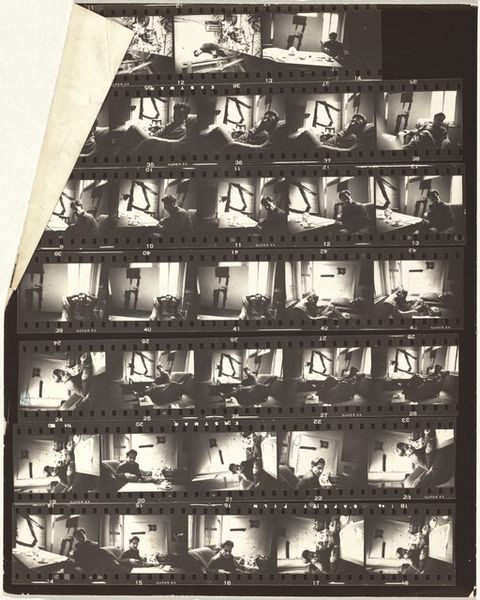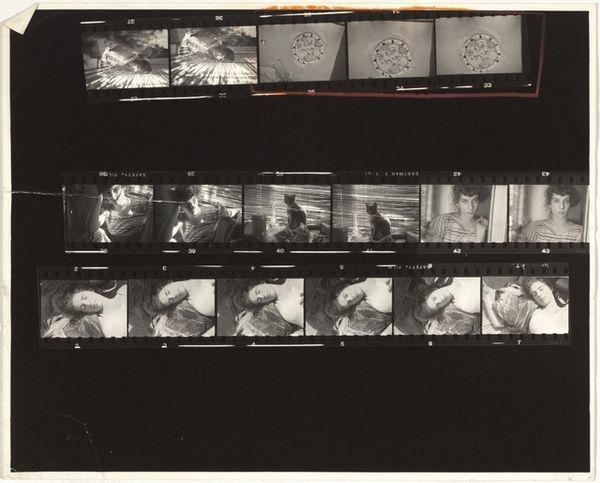
photography, gelatin-silver-print
#
portrait
#
abstract-expressionism
#
contemporary
#
street-photography
#
photography
#
gelatin-silver-print
Dimensions: overall: 21.9 x 27.9 cm (8 5/8 x 11 in.)
Copyright: National Gallery of Art: CC0 1.0
Editor: Here we have Robert Frank's "Allen Ginsberg no number," a gelatin silver print from around 1961 or 62. It's a contact sheet, rows of small black and white images. They look like intimate moments. What strikes me is its almost voyeuristic quality. How do you interpret this work? Curator: That feeling is understandable. I see it as Frank documenting Ginsberg, yes, but also capturing a sense of the Beat Generation's counter-cultural ethos. The raw, grainy aesthetic pushes back against the polished imagery of the time. Think about the political climate; this was a period of social upheaval. How does this informal snapshot aesthetic challenge established power structures? Editor: I guess it feels more real, less staged, almost like he's democratizing the photographic process. But the sheet itself... is he presenting the process of image-making? Curator: Precisely! The contact sheet makes visible the process, highlighting selection and chance. It acknowledges the photographer’s role, rather than pretending at objectivity. And by choosing to present the work this way, it prompts a deeper look at representation itself. It brings to the fore how the photographic act shapes perception. Editor: So, it’s not just about Ginsberg; it's also about the act of photographing Ginsberg. It’s interesting to think about how a conscious choice like presenting a contact sheet becomes an assertion about the nature of the medium. Curator: Exactly. And within the context of the civil rights movement and anti-war sentiment brewing, the decision to amplify a marginalized voice is, in itself, a political act. We’re left not only with an image of Allen Ginsberg, but with an important document of a cultural moment. Editor: This has given me a completely new perspective. I initially saw an almost random selection of images, but now I see a powerful commentary on photography, representation, and the political landscape of the time. Curator: Seeing how these all intersect, the personal, political, and the artistic, brings greater depth to how we perceive art’s capacity to reflect our history.
Comments
No comments
Be the first to comment and join the conversation on the ultimate creative platform.

